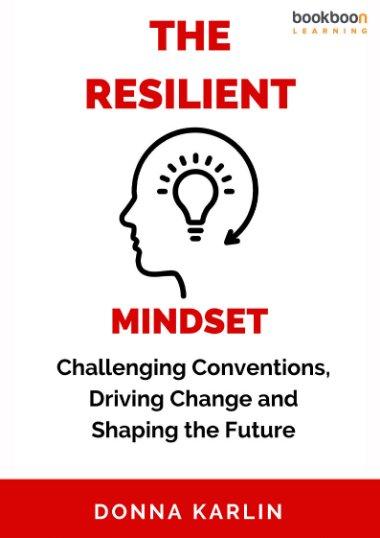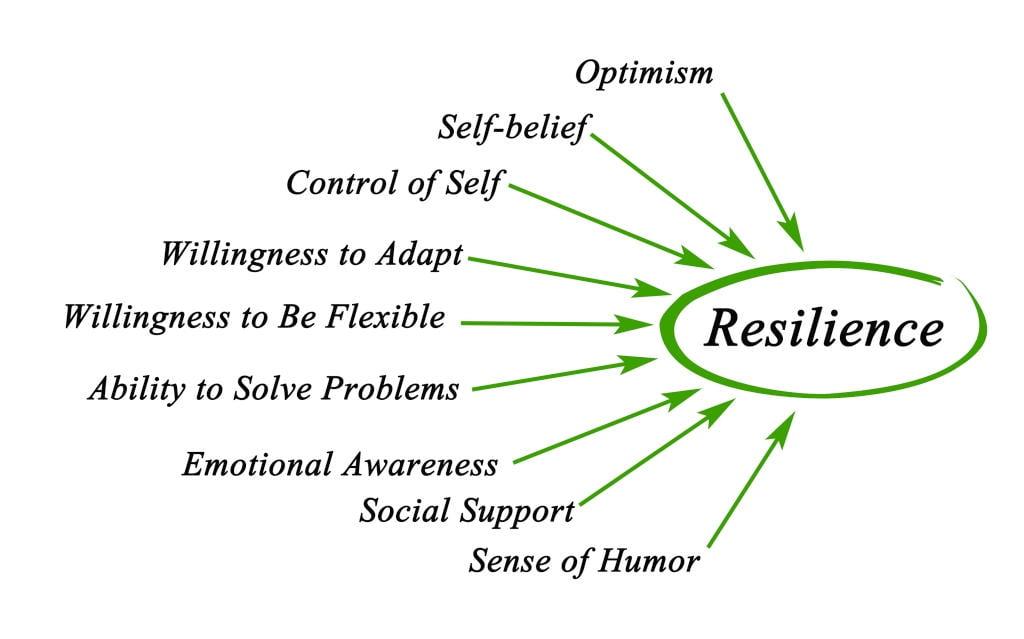In an ever-evolving world marked by uncertainty and challenge, the ability to navigate life’s ups and downs with grace and grit is more crucial than ever. “Crafting Strength: The Art and Science of Building Resilience” delves into the intricate tapestry of resilience—a quality that intertwines both emotional fortitude and psychological flexibility. This exploration seeks to illuminate the delicate balance between art and science in cultivating resilience, revealing how age-old wisdom and modern research intersect to foster not just survival, but thriving in the face of adversity. Through practical insights and compelling narratives, we will uncover the principles and practices that empower individuals to harness their inner strength, transforming challenges into catalysts for growth. Join us on this journey as we explore the multifaceted nature of resilience, a skill that, much like an artisan’s craft, can be honed, nurtured, and perfected over time.
Understanding Resilience: The Psychological Foundations of Bouncing Back
At the core of resilience lies a complex interplay of psychological traits and environmental influences. Understanding this interplay is essential for those looking to foster resilience within themselves or others. Key characteristics often observed in resilient individuals include:
- Emotional Regulation: The ability to manage one’s emotional responses in the face of stress.
- Optimism: A hopeful outlook that fosters a belief in positive outcomes.
- Problem-Solving Skills: The capacity to analyze a situation and identify effective solutions.
- Social Support: Building and maintaining strong, trusting relationships that provide emotional backing.
- Self-Efficacy: Confidence in one’s abilities to handle challenges and setbacks.
Building resilience is not an innate trait but rather a dynamic process influenced by experiences, cognitive styles, and learning. It can be nurtured through various strategies, such as:
| Strategy | Description |
|---|---|
| Mindfulness Practices | Engaging in mindfulness meditation to enhance emotional awareness and stress reduction. |
| Goal Setting | Establishing clear, achievable goals to create a sense of purpose and direction. |
| Positive Affirmations | Using constructive self-talk to reinforce self-worth and foster resilience. |

Nurturing a Resilient Mindset: Techniques for Cultivating Inner Strength
Nurturing a resilient mindset involves a multifaceted approach, integrating various techniques that promote inner strength. One essential practice is the cultivation of self-awareness, allowing individuals to recognize their thoughts and emotions without judgment. This can be achieved through mindfulness exercises such as meditation or journaling, which encourage reflection. Another effective technique is to reframe negative thoughts by consciously replacing them with positive affirmations. This cognitive shift not only improves emotional responses but also strengthens one’s ability to face challenges with a constructive outlook.
Additionally, building resilience can be significantly enhanced through strong social connections. Engaging with supportive relationships provides a sense of belonging and security, facilitating emotional resilience in times of stress. Practicing gratitude is another powerful tool; maintaining a daily gratitude journal can shift focus from what is lacking to what is abundant. Incorporating physical well-being through regular exercise and a balanced diet also plays a crucial role in resilience, as physical health directly impacts emotional and mental states. Consider the following table to understand how these techniques interconnect:
| Technique | Benefit |
|---|---|
| Mindfulness | Enhances self-awareness and emotional regulation |
| Positive Affirmations | Shifts cognitive patterns towards positivity |
| Social Connections | Boosts emotional support and resilience |
| Gratitude Practice | Promotes a positive outlook and reduces stress |
| Physical Health Activities | Improves overall well-being and mental clarity |

Building Stronger Connections: The Role of Relationships in Resilience
At the heart of personal resilience lie the connections we forge with others. These relationships serve as lifelines during challenging times, providing emotional support, encouragement, and perspective. Strong social ties can help reduce stress and foster a sense of belonging, creating a nurturing environment where individuals can thrive. The ability to reach out, share experiences, and draw strength from others enhances our coping mechanisms, making adversity more manageable. Building these connections doesn’t happen overnight — it requires intention and effort. Here are some vital components:
- Empathy: Understanding and sharing the feelings of one another lays the groundwork for meaningful bonds.
- Communication: Open dialogue fosters trust and transparency, enabling deeper connections.
- Support: Being there for others in times of need strengthens the fabric of community.
- Vulnerability: Sharing our struggles allows for authentic connections and mutual healing.
Moreover, cultivating these relationships can also enhance our self-awareness and personal growth. A network of supportive individuals can offer diverse perspectives, helping us to navigate life’s obstacles with greater clarity. When we encounter setbacks, relying on a strong circle encourages bounce-back, often leading to unexpected opportunities for growth. To illustrate the impact of relationships on resilience, consider the following table that highlights various aspects:
| Aspect | Impact on Resilience |
|---|---|
| Social Support | Provides emotional comfort and practical help during tough times. |
| Trust | Creates a safe space for sharing vulnerabilities and fears. |
| Shared Goals | Motivates individuals to persevere through collaborative efforts. |
| Positive Feedback | Validates efforts and enhances self-esteem, fueling resilience. |

Practical Strategies for Everyday Resilience: Tools and Practices for Lasting Strength
Building resilience requires practical strategies that can be seamlessly integrated into daily life. One effective approach is to cultivate mindfulness, which encourages individuals to stay present and acknowledge their feelings without judgment. This practice can be enhanced through techniques like meditation, deep breathing exercises, or even simple mindful walks. Additionally, fostering strong relationships can provide a supportive network during challenging times. Engaging in community activities or seeking out social connections can help create a sense of belonging and security. To further bolster resilience, consider establishing a daily routine that incorporates physical activity, whether it’s a morning jog, yoga, or dancing, as these activities can significantly impact your mental well-being.
Another vital component is the practice of self-compassion, which involves treating oneself with kindness during tough moments. Regularly setting aside time for self-reflection can also aid in identifying stressors and evaluating how you respond to them. Keeping a journal to document your thoughts and feelings can facilitate this process. Furthermore, developing a growth mindset can reshape how you view challenges, emphasizing learning and growth over setbacks. To illustrate various tools that enhance resilience, consider the following table:
| Tool/Practice | Benefits |
|---|---|
| Mindfulness Meditation | Reduces stress, enhances emotional regulation |
| Physical Activity | Boosts mood, increases energy levels |
| Journaling | Facilitates emotional expression, clarifies thoughts |
| Social Engagement | Provides support, enhances sense of belonging |
| Self-Compassion | Promotes emotional resilience, reduces negative self-talk |
To Wrap It Up
As we emerge from the depths of our exploration into the intricate tapestry of resilience, it becomes clear that crafting strength is both an art and a science—a delicate balance of emotional understanding and practical application. The journey toward resilience is not a linear path, but rather a rich landscape of experiences, challenges, and personal growth.
In embracing the tools of resilience, we unlock the potential to navigate life’s uncertainties with greater confidence and grace. Whether through the nurturing of our relationships, the cultivation of mindfulness, or the intentional practice of self-compassion, each step taken is a brushstroke on the canvas of our lives, contributing to a masterpiece that reflects our innate strength.
As we close this chapter, let us remember that resilience is not merely a destination but an ongoing journey—one that invites us to continually refine our skills and deepen our connections. By engaging with both the art and science behind building resilience, we empower ourselves and others, transforming obstacles into opportunities and arising wiser with each new experience.
The canvas of resilience awaits your creative touch; may you paint it boldly, with all the colors of your spirit.



